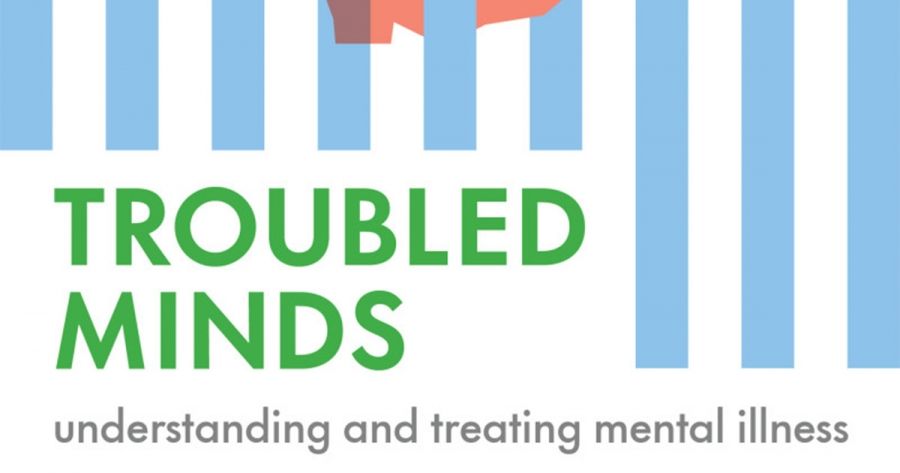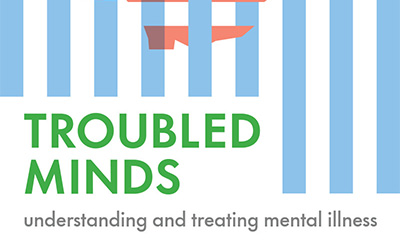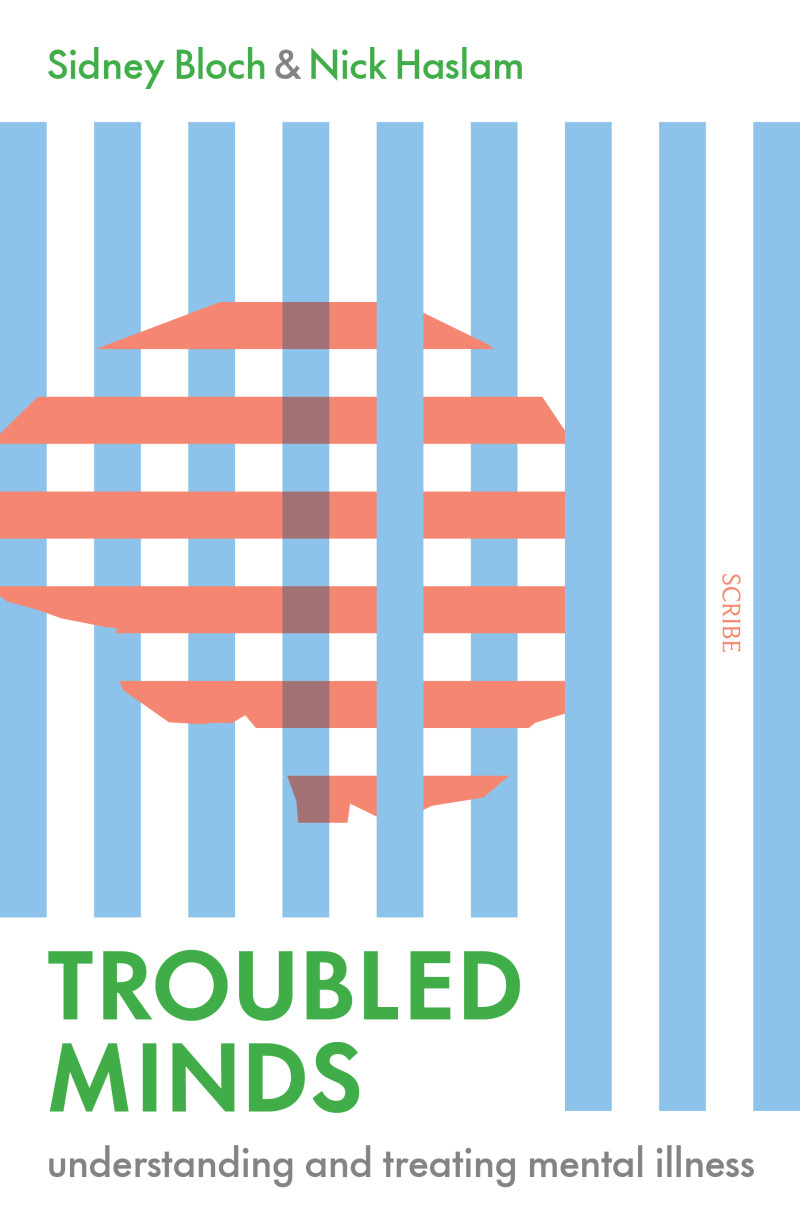
- Free Article: No
- Contents Category: Psychology
- Review Article: Yes
- Article Title: Rabbit holes
- Article Subtitle: A tour de force
- Online Only: No
- Custom Highlight Text:
In the introduction to Troubled Minds, authors Sidney Bloch and Nick Haslam outline the territory they will cover, indicating that they are experts in psychology, psychiatry, and mental illness, with more than eighty years’ experience between them. They are wary of quick fixes (How to… books) and are also wary of professionals publishing in their own fields (potentially biased expertise). Fittingly, they see mental health and mental illness as complex. They have perceived a reader who is looking for a well-written, easy-to-comprehend book that spans conceptual diversity yet concentrates on ‘understanding’ both the ‘emotional and intellectual’ aspects of mental health and illness; one that emphasises contribution from the humanities as well as from science. They hope the book will assist those who first encounter people seeking mental health help (primary practitioners, counsellors, and others). Indeed, Troubled Minds is wonderfully written, highly readable and a tour de force from authors who have seamlessly brought their voices together.
- Featured Image (400px * 250px):

- Alt Tag (Featured Image): Jennifer Harrison reviews ‘Troubled Minds: Understanding and treating mental illness’ by Sidney Bloch and Nick Haslam
- Book 1 Title: Troubled Minds
- Book 1 Subtitle: Understanding and treating mental illness
- Book 1 Biblio: Scribe, $35 pb, 335 pp
- Book 1 Cover Small (400 x 600):

- Book 1 Cover (800 x 1200):

The authors have chosen not to annotate the book (instead choosing to write in a less formal essay style with further reading suggestions placed at the end of each chapter), a choice that sometimes left me wanting to know specifically where they had sourced a quote, or the prevalence of a particular illness. On the other hand, they have often included illuminating excerpts from the humanities, particularly from literature. This welcome holistic approach lends the text readability and provides a context that is interdisciplinary. This integrative approach is reinforced by the 2019 scoping review by the Health Evidence Network of the European Branch of the World Health Organisation (WHO), which included more than 900 research publications that looked at the value of various arts in promoting health and well-being, and which produced an overwhelming endorsement of the value of the arts in all health practice.
In Troubled Minds, the authors have set themselves a comprehensive, even ambitious task. They cover the field of mental health widely with chapters on the most common disorders encountered by psychiatrists and allied health practitioners. They argue for the need for classification and diagnosis to promote shared understanding and practice. They have also chosen a developmental life-cycle approach and cover the psychiatry of children, adults, and the elderly, weaving into every part of the narrative understandings gained from psychoanalysis and psychotherapy.
Their introductory overview of the benighted history of mental illness conceptualisation and treatment is a necessary preface, though one that has been written countless times before. A more important question is whether there are other available texts which cover the same territory as the rest of the book. For the diagnosis and management of mental illness, the multi-authored fifth edition of Management of Mental Disorders (edited by Gavin Andrews et al., 2014) is probably better designed for primary care, allied health practitioners and trainees in terms of the lay-out of information, yet a lot has happened in the field since 2014. Bloch and Haslam cover some of these advances in neuroscience, neurodevelopmental conditions such as autism and Attention Deficit Hyperactivity Disorder, the global burden of mental illness, the effects of media on practice, modern pharmacological approaches (such as psilocybin treatment), brain stimulation, funding and organisational models, spectrum understandings, and stigmatisation.
While these are all important areas to discuss, and the authors do mention recovery models of care, I was surprised to find that many of the conceptual areas which most affect my work as a child neuropsychiatrist are covered only peripherally. Many of these arise from contemporary sociological understandings and include: the importance of having a lived-experience voice at every level of mental health service planning and clinical discussion; the co-design process – ‘nothing about us without us’; the antidiagnostic movement which seeks to bring a more open dialogical discourse between young people, their families, and professionals; the development of specific Hospital Outreach Post-Suicidal Engagement (HOPE) teams to assist youth and adults with suicidal feelings; diagnostic overshadowing (where the presenting symptoms may be misattributed); and barriers to care, as well as the legislative framework that surrounds and supports mental health practice, and which has changed so greatly over the past few years (though a discussion of the various states of Australia and their legislative approaches would be word-consuming). The development of the National Disability Insurance Scheme has revolutionised approaches to understanding restrictive practice and how we value the rights of those with mental illness and disability.
The authors make reference to language use briefly when they discuss the nomenclature of ‘mental illness’, ‘mental disorder’, and ‘mental ill health’, but they make no reference to the need for first-person sensitive language. That is, one might diagnose a ‘disorder’ according to a diagnostic system, such as that of the Diagnostic Statistical Manual of Mental Disorders, Fifth Edition (DSM-5), but when discussing illness with the young person and family it is of utmost destigmatising importance that one uses language that is acceptable and value-affirming.
This is an excellent book. I applaud the authors for the compassion that threads through the case histories, even though the case history approach at times, tantalisingly, seems to reference the experience of the professional working in mental health as much as presenting the clinical material. And why shouldn’t there be a place for discussion about what it has been like to work with very ill and distressed patients over many years? To bring this voice into the conversation? There is perhaps, also, a place to discuss the importance of autoethnographic formulations, co-construction of reports, the place of the therapeutic letter: in general, the rights of people with mental illness to have a say about how they are represented in text, and how we might work together to achieve best outcomes.
Reading Troubled Minds, I couldn’t help but wonder about which rabbit holes we might be currently burrowing into – ones that time and history will no doubt illuminate. This book is a precious resource clinically, and a summary of where we are now and where we are going. The common aim, as stated, is one of helping everyone to better understand mental well-being and mental illness. The authors have, of necessity, left out many areas of discussion and have encouraged a curious reader to seek out their suggested papers and books, which include further reading from those with lived experience.


Comments powered by CComment